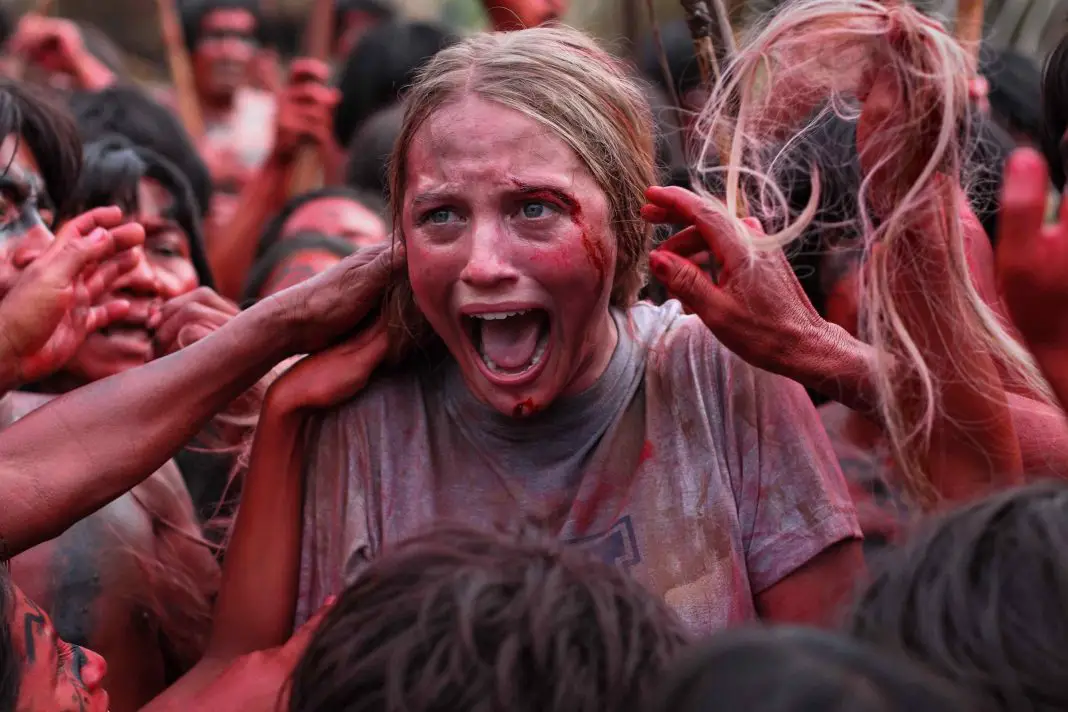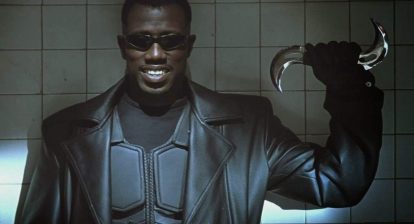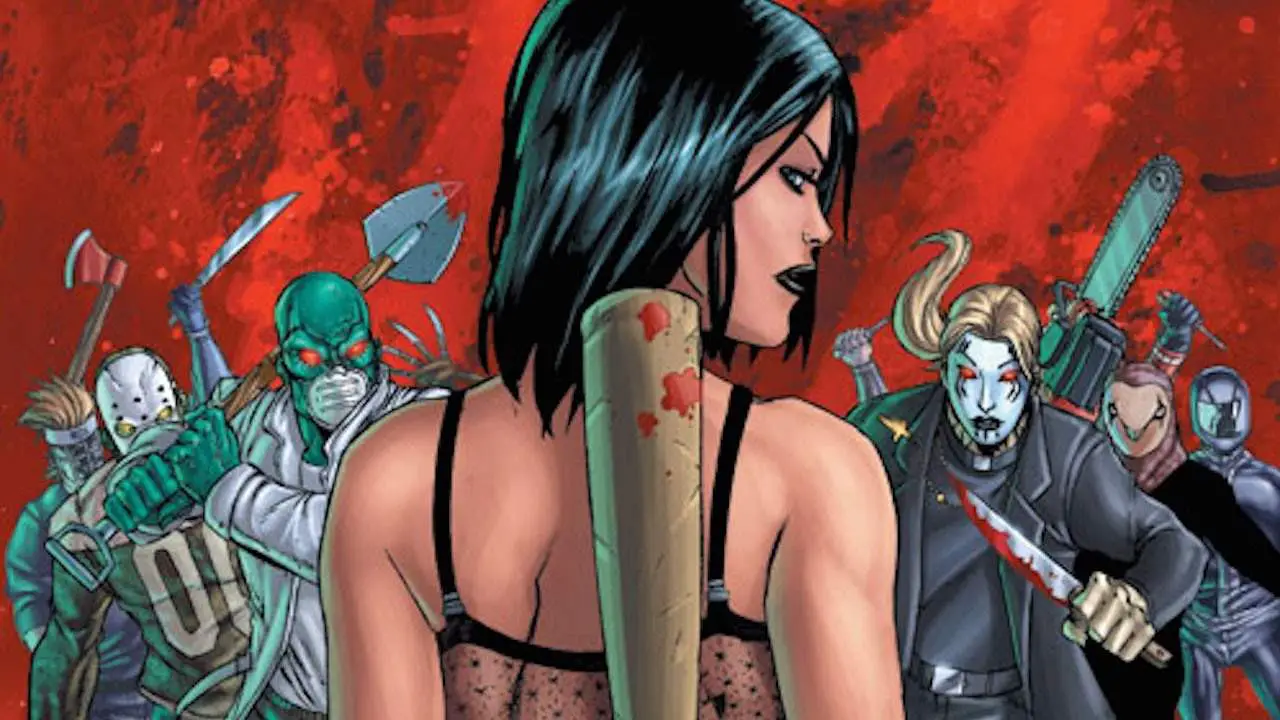To society as a whole, cannibalism represents the great taboo. Picturing yourself in a situation where such a practice is occurring is frightening no matter which role you place yourself in. If you are the one who is about to be consumed, your life is obviously in danger; if you are the one who is about to do the consuming, what it says about your state of mind is even more terrifying. As such, it is no wonder that the concept has been mined so often in horror films.
When the world was first being explored and documented, reports of hostile cannibalism were rampant, almost far too prevalent to be believed. Although there are certainly instances of native tribes that engage in this practice, some of these reports have since been called into question. These false examples were possibly due to a cultural misunderstanding, but were more likely created either as a way to spice up the accounts of these adventurers or for them to demonize the so-called savage people and establish their own cultural superiority. These stereotypes carried over often into the early days of films, and nearly every adventure movie that took place in a jungle featured a native tribe of cannibals. Not that the viewer would necessarily know that they were cannibals if an onscreen character didn’t refer to them as such. These kinds of acts were not depicted onscreen, save for a few instances where a khaki-clad explorer might have been found soaking in a giant pot, which was typically used for comedic effect.
Chronicling every film in which cannibalism appeared would be a book-length endeavor, certainly not fitting for a blog post, and so certain exemptions had to be made. The aforementioned adventure films, as they do not belong to our genre of choice, have been excluded. I have also left out biopics of real life cannibalistic killers and depictions of actual events. Other films were included based on merit, significance, or fan bias. As always, exceptions were made and your choices may vary, so please leave a shoutout to your favorite excluded film in the comments section below.
And keep in mind that zombies, vampires, werewolves and the like are a different breed. When they consume human flesh, it does not constitute cannibalism.
The earliest example of cannibalism on film appears to be The Enchanted Kiss from 1917. It’s unlikely that the film still exists, however the O. Henry short story that it was based on does. If it is any indication of the film’s plot, a lovelorn man learns that the secret to eternal youth is chili-con-carne “made not with the beef or the chicken, but from the flesh of the senorita—young and tender.” Said senorita just so happens to be the girl that he has been pining for.
Beyond that, cannibalism didn’t feature heavily in many early horror films, but it did happen on occasion. The first film adaptation of Sweeney Todd, the razor-wielding barber whose murder victims were baked into meat pies, appeared in 1926, and then again in 1928. In 1936, another adaptation appeared, this time called The Demon Barber of Fleet Street and starring the appropriately-named Tod Slaughter. It was adapted as an episode of the television series Gaslight Theatre in 1965. Andy Milligan told his version, Bloodthirsty Butchers, in 1970, the same year that it appeared as an episode of Mystery and Imagination. More iterations appeared in 1982, 1997, 2006, and 2007.
Also present was 1932’s Doctor X, with a scarred killer (Lionel Atwill) who cannibalized his victims; and the Circus Queen Murder, which featured a sideshow attraction of thirteen living cannibals (one can only assume how the ringleader kept them fed).
And then the Motion Picture Production Code, which was technically adopted in 1930 but wasn’t actually enforced until 1934, put the kibosh on cannibalism, and the flesh-eaters retreated to the shadows for quite some time.
Like those who dined on Sweeney Todd’s meat pies, the patrons of a members only dinner club inadvertently consumed human flesh in the 1959 episode of Alfred Hitchcock Presents entitled “Specialty of the House”, a dark twist that only Hitch could get away with on television at the time. The episode was remade in 1987 for the revived series.
It’s arguable whether or not H.G. Lewis actually invented the splatter film, but as for cannibalism, he threw the doors open and painted everything red with 1963’s Blood Feast, paving the way for a slew of pictures to follow. 1987’s Blood Diner was little more than a Blood Feast homage, and the official sequel, Blood Feast 2: All U Can Eat, was released in 2002.
1966 saw the release of The Undertaker and his Pals, a bizarre horror comedy that involved a diner with murder on the menu, and 1967 brought the cult classic Spider Baby (or The Maddest Story Ever Told) with Lon Chaney Jr. and a young Sid Haig as members of a psychopathic family, the elders of which reside in the basement and chew the fat, so to speak.
It wasn’t until the 1970s, though, that the cannibal started to hit full swing. In 1971, we watched The Mad Butcher, a former mental patient, have a relapse and begin cranking out kielbasas made from nosy neighbors and such. Umberto Lenzi’s Man from Deep River proved to be the originator of the “Cannibal Boom” when it was released in 1972, though as an exploitation movement, it wouldn’t really take off for five more years. Soylent Green, released in 1973, may seem like a classy futuristic police procedural, but it turned out to be a watershed moment in the “unwitting cannibal” film. Alternately, rather than saving the surprise for the end, Cannibal Girls from the same year put it all in the title. This quirky film is most notable for being an Ivan Reitman flick, starring Eugene Levy and Andrea Martin in starring roles before SCTV made them famous.
1973 also gave us the following flesh-eating films: Raw Meat, with a prissy Donald Pleasance screaming about tea bags and investigating a series of subway murders; the anthology film Tales that Witness Magic, containing a segment wherein a mourning man must consume virgin meat in order to appease a Hawaiian deity; and Warlock Moon, featuring a pagan ritual that requires the same.
1974 would be an important year for horror films no matter what subject was being discussed, as it saw the release of The Texas Chainsaw Massacre, in which the cannibalistic Sawyer clan debuted. They would return again for Texas Chainsaw Massacre 2 in 1986, Leatherface: The Texas Chainsaw Massacre III in 1990, The Next Generation in 1994, the remake in 2003, The Beginning in 2006, and Texas Chainsaw 3D in 2013. They’re certainly a busy family.
Other cannibal films from 1974 include Pete Walker’s Frightmare, which is sometimes referred to as the UK’s answer to Chainsaw; and Jess Franco’s The Perverse Countess, which took the basic premise of The Most Dangerous Game and added a cannibalistic twist.
1977 saw the release of the sleazy The Gestapo’s Last Orgy, a nazisploitation film that spotlighted a cannibal dinner scene. The Hills Have Eyes from the same year introduced us to a cannibal clan similar to that of the Sawyers, but they operated out of the desert rather than the backroads of Texas. The much-maligned Hills Have Eyes 2 was released in 1984, and the franchise was rebooted in 2006, with its own much-maligned sequel the following year. Production company Asylum released a ‘mockbuster’ of the reboot also in 2006, entitled Hillside Cannibals.
But most importantly for our purposes here, 1977 was the start of the so-called “Cannibal Boom” of foreign films which found success in American grindhouses. This film cycle looked back to 1972’s Man from Deep River for inspiration, but kicked the exploitation up to eleven. Plot lines were secondary for these films, which relied on a sleazy mixture of sex, rape, gore, and oftentimes genuine animal slaughter in order to earn their infamy. This was the onset of the cannibal film as its own genre, featuring primitive men for whom cannibalism is a way of life, as opposed to cannibalism for survival or used as a “quirk” to make an antagonist even more despicable. The typical story involved a group of civilized folk traveling into unexplored territory and being captured, tortured and eventually eaten by primitive tribes.
It began with Jungle Holocaust from director Ruggero Deodato, which followed a pair of oil prospectors whose plane was damaged, stranding them in the Philippines, and was shortly thereafter followed by Emanuelle and the Last Cannibals from Joe D’Amato, who must have been inspired by the cannibalism hallucination scene in his Emanuelle’s Revenge two year prior. In 1978, Sergio Martino gave us The Mountain of the Cannibal God, an Italian English-language film starring Stacy Keach and Ursula Andress. The Indonesians got in on the action next with Primitives (also known as Savage Terror), and the year closed out with another D’Amato flick, Papaya: Love Goddess of the Cannibals.
The cannibal cycle mysteriously paused in 1979, with only one such film being released, and its American lineage and lack of cycle tropes prevents it from being included among them. It does warrant a mention here, though, as Don’t Go Near the Park concerned ritual cannibalism as a means for achieving eternal youth.
When the cycle kicked in again in 1980, it did so with a vengeance, seeing the release of seven titles over the course of twelve months: Deodato’s Cannibal Holocaust, which landed the director in court not only for obscenity charges but also due to rumors that it was a genuine snuff film; Eaten Alive from Umberto Lenzi which is said to have been inspired by 1978’s Jonestown Massacre; Zombie Holocaust, directed by Marino Girolami, which combined the cannibal and the zombie genres; We’re Going to Eat You, from Hong Kong, which threw martial arts and comedy into the mix; D’Amato’s Orgasmo Nero (Sex and Black Magic), which was far more concerned with sex than it was with cannibalism; White Cannibal Queen, Jess Franco and Franco Prosperi’s addition, which concerned a kidnapped teenager who grew to rule the tribe; and Devil Hunter, also from Jess Franco, which had a war vet trying to save a beautiful model from kidnappers and cannibals.
Following this massive output, things started to slow down to a trickle, but they did not altogether stop. 1981 saw only the release of France’s Cannibal Terror, which is neither as graphic nor as controversial as its brethren; and Lenzi’s Cannibal Ferox, which showcased what happens to anthropologists who set out to prove that cannibalism is a myth (hint: it is not). After two years of silence, White Slave (Amazonia: the Catherine Mills Story) appeared in 1984, telling the tale of a boarding school graduate seeking vengeance against a cannibal tribe for murdering her parents. Massacre in Dinosaur Valley, which is sometimes billed as Cannibal Ferox 2 despite not being an official sequel, was released in 1985. And in 1988, bringing an unofficial close to the Cannibal Boom, was Natura Contro from Antonio Climati, which was sometimes distributed as a sequel to Cannibal Holocaust.
While the insular Cannibal Boom detailed above was taking place in other countries for the benefit of America’s 42nd Street crowd, other films that included cannibals were still being produced. Backtracking to 1980, we have Motel Hell, in which people were collected and killed to be used as ingredients for Farmer Vincent’s Fritters; and D’Amato’s Anthropophagus, in which tourists were stranded on an island with a cannibalistic killer. It was remade in 1999 as a German film entitled Anthropophagus 2000. Microwave Massacre from 1983 is beloved low-budget trash, about a man who cooked his wife in a giant microwave and ate her for lunch.
Manhunter from 1986 was the first film to depict the character of Hannibal “the Cannibal” Lecter, but not the last. The franchise wouldn’t really take off until Anthony Hopkins stepped into the role for Brian Cox in 1991’s Silence of the Lambs. It was followed up with Hannibal in 2001, Red Dragon in 2002, Hannibal Rising in 2007 (with Gaspard Ulliel as a young Lecter), and now the popular Hannibal television series that is currently running with Mads Mikkelsen in the title role.
Lucio Fulci brought us Touch of Death in 1988, about a gambler who seduced women to get ahold of their money for his debts and their flesh for his dinner. Auntie Lee’s Meat Pies, released in 1992, echoed elements of Motel Hell and Sweeney Todd, as Karen Black and Michael Berryman sent out beautiful young ladies to seduce and murder men to comprise their delicious delicacies. Ravenous was released in 1999, a strange black comedy/horror hybrid that took place during the Mexican-American War and tackled the cannibalistic mythology of the Wendigo,
In 2003, we received the first installment of the Wrong Turn franchise, which involved a family of (what else?) inbred backwoods cannibals who made a habit of dining on attractive young people. It was followed with five direct-to-DVD sequels: Wrong Turn 2: Dead End in 2007; Wrong Turn 3: Left for Dead in 2009; Wrong Turn 4: Bloody Beginnings in 2011; Wrong Turn 5: Bloodlines in 2012; and Wrong Turn 6: Last Resort in 2014.
The Hong Kong anthology film Three…Extremes was released in 2004, containing a segment entitled “Dumplings” directed by Fruit Chan. The same year, Chan expanded it into a feature length film of the same name. Both involved an actress who sought out dumplings with a very special ingredient in order to regain her youth and beauty. Japan’s The Last Supper from 2005 used cannibalism almost as a Buddy Love-type serum, with a man going from nebbish nobody to suave celebrity plastic surgeon after consumption.
Also in 2004, Bruno Mattei attempted to resurrect (or at least cash in on) the cannibal genre with two films inspired by the cycle of the 1970s and 1980s: Cannibal World, about a reporter who ventured with her news team into the Amazon for an exposé on cannibalistic tribes; and Land of Death, about military commandos who stormed the jungle to rescue a girl from a native tribe.
In 2005, Mick Garris launched the anthology series Masters of Horror on cable network Showtime, each episode a one-hour movie from an established genre director. Two episodes involved cannibalism: Dario Argento’s “Jenifer”, based on a comic from Creepy Magazine; and “The Washingtonians” from Peter Medak, which revolved around the concept that George Washington was a cannibal, and a modern brotherhood who had sworn to protect his secret.
In 2008, Masters of Horror went off the air, and NBC tried to fill the void with a watered down anthology series entitled Fear Itself, which followed the same basic conceit. Only eight episodes were aired, with two of them concerning cannibalism in some way: Stuart Gordon’s “Eater”, about a police officer pursuing a cannibalistic serial killer who uses black magic; and Larry Fessenden’s “Skin & Bones”, which capitalized on the Wendigo myth. It’s certainly no coincidence that Fessenden was chosen for this episode, as in 2001 he directed the horror film entitled Wendigo.
In the new millennium, a wave of transgressive French genre films had begun to invade the English-speaking world, sometimes referred to as the ‘New French Extremity’. Amongst titles like High Tension, Sheitan, Inside and Martyrs came 2007’s Frontier(s) from director Xavier Gens, complete with political commentary and neo-nazi cannibals. The same year, Dario Argento completed his Three Mothers trilogy with Mother of Tears, which had a coven of witches who gnaw on human flesh.
2009’s Hunger was something like Saw with a cannibal bite, as a group of strangers woke up imprisoned together with no recollection of how they got there, part of a sick experiment to see how long before they break down and start consuming each other to survive. Also released was Offspring, based on a novel by Jack Ketchum, which followed a cannibal clan chomping their way through a coastal town. A sequel entitled The Woman, about a survivor of the clan being captured by a “civilized” family, was released in 2011, working as a sort of reversal of many films seen during the Cannibal Boom.
Mexican director Jorge Michel Grau’s We Are What We Are from 2010 showcased a family who had to carry on their tradition of cannibalism without a patriarch, following the death of their father. In 2013, it was remade for English-speaking audiences by Jim Mickle.
2010 also brought us the Satanism/biker/cannibal exploitation mishmash Hard Ride to Hell with Miguel Ferrer and Katherine Isabelle, a sort of cross between Psychomania and Race with the Devil. I Saw the Devil from South Korea was also released in 2010, examining the vengeance of a police officer against the man who killed his fiancé, and featured a secondary killer who consumed his victims.
The 2012 Chilean thriller Hidden in the Woods followed three siblings whose drug dealer father was killed, leaving them to fend for themselves in a violent world where cannibalism and murder feature heavily. An American remake was shot in 2014.
Which pretty much brings us up to today.
In 2013, director Eli Roth produced The Green Inferno, which promises to take us back to the gory, glory days of the Cannibal Boom. It has been screened in various film festivals, but has yet to see a wide release either theatrically or on home video. It had been scheduled for a September 2014 release, but has now been delayed indefinitely. All of this waiting serves to build up suspense, but it remains to be seen if it can live up to the hype. Modern horror audiences are notoriously difficult to shock and appall, and those are the cornerstones of the films that Green Inferno strives to emulate.
But if anyone can manage it, it would be Eli Roth.













